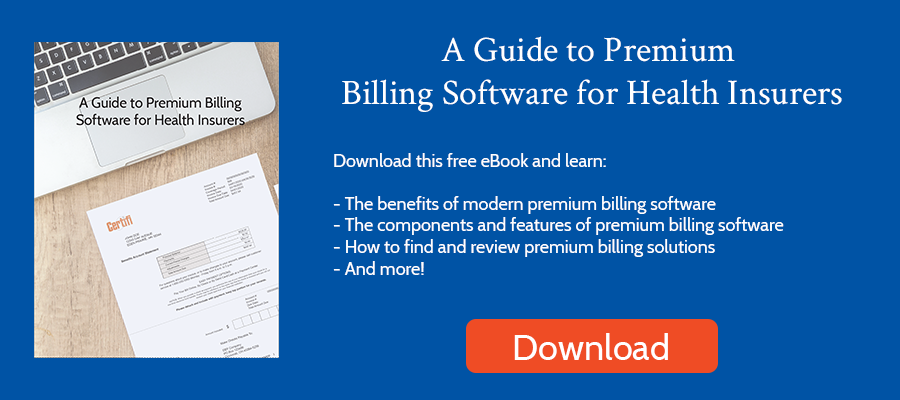Few people know that the popular photo-sharing app Instagram – which sold to Facebook for $1 billion in 2012 – started as a passion project by founder Kevin Systrom. Systrom loved bourbon and wanted to find cool new places that served it. His app, Burbn, allowed users to check in and share pictures of bourbon. Systrom noticed that users particularly loved the photo-sharing feature and soon pivoted away from bourbon to photo-sharing. Instagram was born.
Like Instagram, members of Certifi’s team built several billing applications throughout their careers, learning along the way. Perhaps the most monumental learning: Developing an accounting architecture in premium billing software – by tying debits and credits together in transaction sets – could enhance the billing process in several ways.
This simple breakthrough led to several billing benefits, including:
Automated Retroactivity
Most premium billing software leverages a point-in-time approach to billing. Enrollment data determines the monthly invoice amount. A member or group makes a payment. Then, a retroactive change occurs – a member has a baby – that requires an adjustment to the previous month’s bill. The software’s design typically means a manual adjustment occurs. As a result, someone reviews the change and calculates the amount to add, manually adding it to the software system.
An accounting-style design improves that process. By using timelined data, our system can automate retroactive reconciliation. It can “see” the addition of a child, read the start date, determine missing transactions, and add those transactions as adjustments on the next invoice.
The software can apply that same approach to other cases, including those where payments have been made, perhaps for months. Take the example of age-banded premium rates where a member had an incorrect date of birth. The DOB wasn’t corrected until after the member made three months of payments. The system can read the credits and debits to determine appropriate adjustments based on the correct date of birth.
Eliminating much of that retroactive reconciliation saves billing teams time while improving accuracy by reducing human error.
Better Commission Management
Billing organizations typically remit a portion of premium dollars to brokers or other sales and technology partners in the form of commissions. Some organizations base those payments on dollars invoiced, not dollars paid. That can lead to overpayments to commissioned entities that harm profitability. Plus, it can lead to manual work that can leave valuable partners waiting for a commission payment.
Our accounting architecture improves commission accuracy by enabling organizations to remit funds based on dollars paid, not billed. Basing individual-level commission reporting on funds received improves commission accuracy and limits your exposure should customers fail to pay on time.
Plus, by automating much of the payment reconciliation – integrating with lockboxes and payment processors to get and apply payments electronically – and retroactivity, commission remittance reporting is generally faster than with other commission management solutions.
Better Reporting
The ability to generate the detailed financial reporting you need relies on the underlying structure of your software and its data. Our software includes all the standard reports you’d expect – aging reports, invoice and payment detail reports, delinquency reports, remittance reports, payment posting reports, and more.
Plus, an accounting architecture results in financial transactions for each aspect of a bill’s debit and credit. As a result, downstream reporting platforms – or even an internal artificial intelligence product – can ingest that information to deliver further insights to improve financial reporting.
Easier to Integrate with General Ledger
The granular nature of transaction data in an accounting-based architecture simplifies general ledger integrations. The most common method involves the billing platform delivering entries on a predetermined schedule. Typically, that means billed revenue when invoices are made available to consumers and groups, and collected cash after payment remittance. This integration can take several forms but is generally a custom electronic interface pushed by the billing platform according to a schedule. The billing system can provide detailed or summarized information by general ledger account.
Because an accounting architecture enables automated adjustments, the system can also associate those transactions with a particular member, group, plan, market segment, revenue category, etc., based on known characteristics when created. Mapping to client-specified interfaces implements rules that appropriately categorize these adjustments.
As you can see, an accounting architecture in premium billing software streamlines processes while delivering better reporting. The result: better data, better processes, and happier customers.
Certifi’s health insurance premium billing and payment solutions help healthcare payers improve member engagement while reducing administrative costs.



